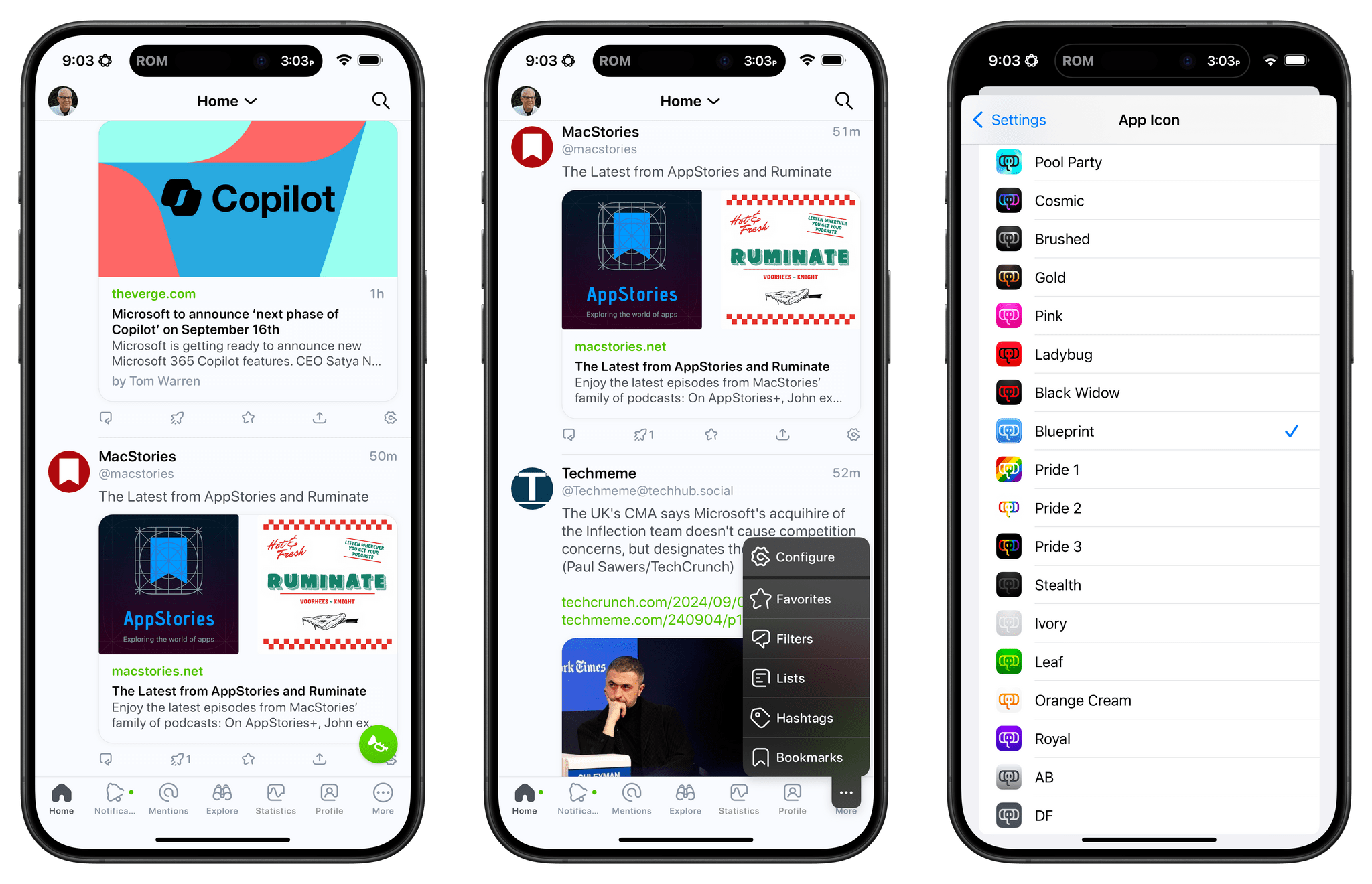Today, Tapbots released version 2.0 of Ivory, the company’s Mastodon client for iOS, iPadOS, and macOS. The update brings a notable list of improvements, one exciting new feature that should make it easier to follow and curate specific topics on the fediverse, and a fully redesigned share sheet extension.
On Mastodon, it is possible to follow hashtags in addition to accounts. This feature is particularly useful for tracking discussions about a specific topic across the wider fediverse. However, following hashtags is currently limited. Followed hashtags appear in your main chronological timeline among your followed accounts, and it isn’t possible to curate together multiple hashtags into a separate, easily accessible view. Ivory 2.0 aims to solve this with Hashtag Lists. Now, in the app’s redesigned Hashtags tab, you can create a list that contains up to four hashtags, and you can even exclude specific hashtags if you’re looking to fine-tune the resulting timeline.
The other big improvement in Ivory 2.0 is its redesigned share sheet extension for creating posts. It is now fully-featured, with the ability to set the post’s visibility and language, as well as an option to add alternative text descriptions to shared images and videos. When sharing a URL, the share sheet will now show a preview of the link card that will appear as part of your post. To get started, tap the Share button from the Photos app, Safari, or any app that supports the native iOS and iPadOS share sheet, then choose the Ivory icon.
In addition, Ivory 2.0 comes with small visual refinements to the way images and videos are displayed in a post’s detail view and the ability to set a fixed order for context menu items throughout the app.
Tapbots continues to update and refine Ivory at a steady pace. As a result, it is still my favorite way to use Mastodon on a daily basis. With a new major version of Mastodon on the horizon, I’m excited to see Tapbots add support for new features in Ivory without necessarily waiting for improvements to the default Mastodon experience.
If you want to create your own cat hashtag list today, Ivory 2.0 is now available on the App Store for iOS, iPadOS, and macOS. The app comes with a seven-day free trial for new users, after which a monthly or annual subscription is required to use most of its features.















